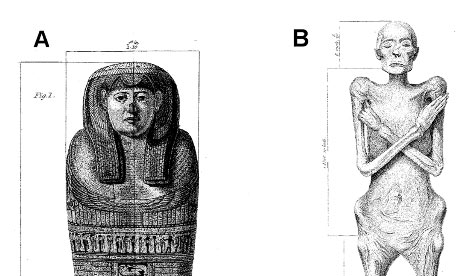
The first ever autopsy of an Egyptian mummy was carried out in 1825, by an eminent physician called Augustus Bozzi Granville. His work was ahead of its time, but it now turns out he was completely wrong about the cause of death. He also made one other chilling mistake.
The mummy was that of a well-to-do woman called Irtyersenu. She was aged about 50 when she died, and was buried in the necropolis at Thebes, in about 600 BC. Unusually, her organs were preserved intact, making her a perfect subject for scientific examination. Granville found a tumour in her ovary, and pronounced that this is what killed her. But scientists led by Helen Donoghue of University College London recently repeated the autopsy using molecular techniques and found that this tumour was actually benign. Instead they found that her body was riven with the bacterium that causes tuberculosis, a disease that was prevalent in ancient Egypt. Their results are published today, in Proceedings of the Royal Society B.
And Granville's other mistake? In 1825, when he carried out his autopsy, Britain was in the midst of "mummy mania", and he announced his results to a packed crowd at the Royal Society of London. The mummy had been coated with a strange waxy substance, which Granville concluded had been added by the mummy's makers, to help with preservation. To set the mood in his Royal Society lecture, he lit the hall with candles made from this wax.
But Donoghue's team found that the wax in Granville's candles hadn't been added as a preservation agent at all. It had been formed from the decomposing fat of the corpse.
By the way, you might think that diagnosing a 2600-year-old case of TB is impressive, but that's not even close to the oldest known cases, which were identified by Donoghue and colleagues and published in PLoS ONE last year. The victims were a woman and child who lived 9000 years ago in a Neolithic village called Atlit Yam, on the coast of what is now Israel. Sea level rise has since submerged the site, but marine archaeologists were able to scoop up the skeletons from their grave sites in the sediment, preserved in such good condition that DNA from the tuberculosis bacterium had survived within the bones.